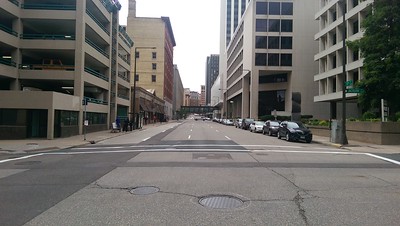Parking lots are not glamorous, but a 954-car ramp taught Saint Paul, MN a very valuable lesson. The parking lot in question is in downtown Saint Paul, the 67th largest US city. Built in 2000, the Saint Paul Port Authority issued $20M in revenue-backed bonds to pay for construction. The idea was that the parking lot would generate enough revenue to pay off its bonds.
Good idea on paper. Didn’t work in practice. By 2009, the Port Authority had defaulted on the bonds, sticking the bondholders with a $30M loss. After the Port Authority defaulted on the bond payments, Wells Fargo assumed control of the lot. Last year, WF foreclosed on the property, and sold it last month for $7M. The new owner, a developer, intends to build a 200-unit apartment building on top of it.
So, what was the valuable lesson? Because of the default and foreclosure, the City of Saint Paul No. Longer. Issues. Revenue. Bonds.
It’s really just that simple. The City no longer risks its general fund to guarantee revenue-backed bond issues. Instead, it finances such projects with the help of third-parties. As an added benefit, the ramp, which the Port Authority has owned for more than two decades, will soon generate property tax revenues.
Revenue bonds run the risk that the revenue that’s supposed to carry the water won’t. That puts the issuer and its general fund dollars (which it might need for – I don’t know – operations?) at risk. After one nasty default, Saint Paul was cured of believing the lie of cash-register operations that pay for themselves.
Revenue-backed bonds pose unacceptable risk
Anyone who tells you that some money-making venture will pay for itself is probably an optimist. When it comes to money, it is far better to be pessimistic. That allows you to judge risk better. (Which public sector administrators don’t seem to have much experience with.)
So – happy ending. The developer now gets to take over the risk on parking in Downtown Saint Paul. The City no longer has a defaulted, foreclosed property hanging around its neck. And best of all, the City now has a policy of not risking its operational budget to chase after money. (Small bills, no less.)
Washtenaw Community College has also seen what happens when the revenue that backs the bonds doesn’t materialize. Last year alone, the College spent $4M in federal COVID-19 relief funds to cover the Health and Fitness Center’s losses. That money could have funded a lot of other improvements on campus.
The major difference between the City of Saint Paul and Washtenaw Community College is that the City of Saint Paul recognized and responded to the risk of revenue-backed bonds. The WCC Board of Trustees? Not so much.
Photo Credit: Michael Hicks , via Flickr






















